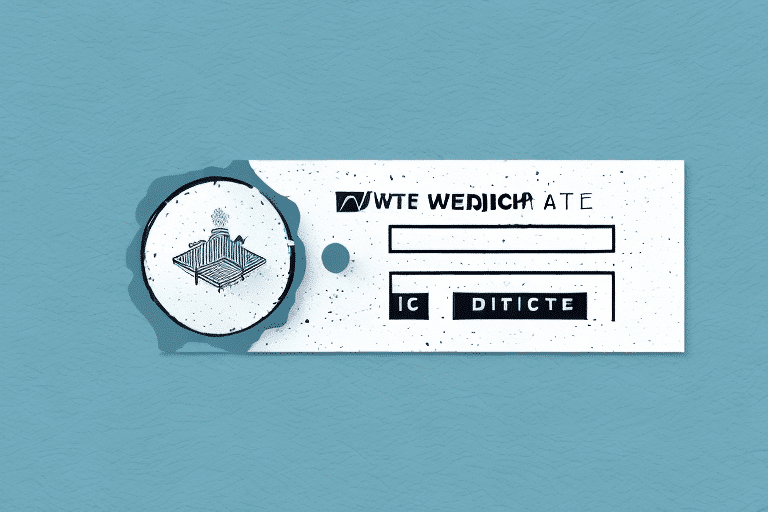Understanding UPS Dimensional Weight Oversize Fees
Shipping with UPS can present challenges for businesses, particularly when unexpected costs arise from dimensional weight oversize fees. This article delves into everything you need to know about UPS dimensional weight oversize fees, including their definition, calculation methods, influencing factors, common packaging mistakes, and strategies to avoid these fees. We will also explore the impact of dimensional weight pricing on your shipping costs, the advantages and disadvantages of using UPS, hidden shipping costs, and tips for negotiating lower shipping rates with UPS.
What Are Dimensional Weight Oversize Fees?
Dimensional weight oversize fees are charges applied when a package's actual weight is less than its dimensional weight, which is calculated based on the package's size. UPS introduced this pricing model in 2007 to promote efficient packaging and account for the space oversized packages occupy in their delivery vehicles.
For example, if a package measures 18 x 12 x 9 inches, its dimensional weight would be 12 pounds (18 x 12 x 9 / 166 = 12). If the actual weight is less than the dimensional weight, the package may incur higher shipping fees due to the space it occupies. Businesses that frequently ship large or bulky items can see significant increases in shipping costs due to these fees.
To mitigate these fees, shippers should consider using smaller packaging or optimizing the size and weight of their products. Additionally, some carriers offer discounts or waivers for dimensional weight oversize fees for specific types of shipments, such as those that are particularly heavy or dense.
Calculating Dimensional Weight Oversize Fees
Calculating dimensional weight involves measuring the length, width, and height of your package in inches and dividing the total by the dimensional weight divisor, typically 166 for UPS services. For instance, a package measuring 18 x 12 x 9 inches has a dimensional weight of 12 pounds (18 x 12 x 9 / 166 = 12).
It's crucial to note that different carriers may use varying dimensional weight divisors. Therefore, always verify with your specific carrier to ensure accurate calculations. Additionally, carriers may have distinct rules for determining when a package is considered "oversize" and subject to additional fees, so reviewing their guidelines carefully is essential.
For businesses that frequently ship large or bulky items, exploring alternative packaging options, such as custom-sized boxes or packaging materials that compress the item's size without compromising safety, can help avoid oversize fees and reduce shipping costs over time.
Factors Affecting Dimensional Weight Oversize Fees
The dimensional weight oversize fees you incur depend on several factors, including:
- Package Size and Weight: Larger and lighter packages typically incur higher dimensional fees.
- Shipping Distance: Longer distances can increase the overall cost.
- Shipping Method: Different UPS services have varying fee structures.
- Time of Year: Peak seasons may influence shipping costs.
- Destination: International shipments often have different fee considerations.
- Additional Services: Services like insurance or signature confirmation can add to the fees.
Moreover, the carrier you choose plays a significant role, as different carriers have unique policies and fees for oversized packages. It's important to research and compare options to find the most cost-effective solution for your shipping needs. Some carriers may offer discounts or promotions based on package size or destination, which can help reduce dimensional weight oversize fees.
Common Packing Mistakes Leading to Oversize Fees
Several packing mistakes can result in dimensional weight oversize fees, including:
- Using Oversized Boxes: Selecting a box that is too large for the contents increases the package's dimensional weight.
- Poor Padding: Inadequate padding can cause items to shift, requiring more space and increasing fees.
- Inaccurate Measurements: Failing to accurately measure and weigh packages can lead to discrepancies between estimated and actual shipping costs.
Avoiding these mistakes involves careful selection of packaging materials, accurate measurement of package dimensions and weight, and ensuring that the packaging is appropriately sized for its contents.
Strategies to Avoid UPS Dimensional Weight Oversize Fees
To minimize dimensional weight oversize fees with UPS, consider the following strategies:
- Optimize Packaging: Choose the right size and type of packaging materials to reduce the space your packages occupy.
- Flat-Rate Shipping: Opt for flat-rate shipping options or services like UPS Freight to mitigate the impact of dimensional weight pricing.
- Negotiate Shipping Rates: Work with UPS to negotiate lower shipping rates based on your shipping volume and frequency.
- Supply Chain Optimization: Streamline your supply chain to minimize package weight and size.
- Review Shipping Contracts: Carefully examine your shipping agreements with UPS to identify and avoid unexpected fees.
Implementing these strategies can help reduce shipping costs, avoid oversize fees, and enhance your overall shipping efficiency.
The Impact of Dimensional Weight Pricing on Your Shipping Costs
Dimensional weight pricing significantly affects your shipping costs, especially for businesses that frequently ship large but lightweight packages. By understanding the factors that influence these fees and taking steps to minimize them, you can reduce your overall shipping expenses and improve your profit margins.
For example, according to UPS Business Solutions, businesses can save up to 20% on shipping costs by optimizing package size and weight. Additionally, efficient packaging practices not only reduce costs but also contribute to sustainability efforts by minimizing material usage and transportation impact.
Pros and Cons of Using UPS for Your Shipping Needs
When selecting a shipping provider, it's essential to weigh the pros and cons of using UPS:
- Pros:
- Reliable and widely recognized brand
- Broad range of shipping services and tools
- Extensive global reach
- Advanced tracking and delivery confirmation options
- Cons:
- Higher shipping fees, particularly for oversized packages
- Complex pricing structures that can be difficult to navigate
- Potential for unexpected additional fees
Businesses must evaluate these factors in the context of their specific shipping needs and compare UPS with other carriers to determine the best fit for their operations.
Hidden Costs Associated with Shipping with UPS
Apart from dimensional weight oversize fees, shipping with UPS may involve other hidden costs, such as:
- Fuel Surcharges: Additional fees based on fluctuating fuel prices.
- Delivery Confirmation Fees: Charges for services that verify delivery.
- Address Correction Fees: Fees for correcting delivery addresses.
- Residential Delivery Fees: Extra charges for delivering to residential addresses.
Understanding these additional costs is crucial for accurately calculating your shipping expenses and identifying opportunities to reduce overall costs. Reviewing your shipping contracts and agreements with UPS can help you uncover and manage these hidden fees effectively.
Negotiating Lower Shipping Rates with UPS
If high shipping costs through UPS are a concern for your business, consider the following strategies to negotiate lower rates:
- Volume Discounts: Leverage your shipping frequency and total volume to negotiate better rates.
- Fee Waivers: Request waivers for specific fees and surcharges based on your shipping needs.
- Competitive Offers: Use competitive rates from other carriers as leverage to negotiate with UPS.
- Customized Shipping Solutions: Work with UPS to develop tailored shipping solutions that align with your business requirements and budget.
Successful negotiation requires a clear understanding of your shipping patterns, costs, and the market dynamics within your industry. Building a strong relationship with your UPS account manager can also facilitate more effective negotiations.
Comparing UPS's Dimensional Weight Pricing with Other Carriers
To make informed decisions about your shipping needs, it's essential to compare UPS's dimensional weight pricing with other carriers:
- FedEx: Similar to UPS, FedEx uses dimensional weight pricing but with different divisors and specific requirements based on shipping distance and delivery time.
- USPS: The United States Postal Service offers different pricing models, often more cost-effective for smaller packages or regional shipments.
- Regional Carriers: Regional carriers may provide more tailored shipping solutions for businesses primarily operating within specific geographic areas.
Understanding the nuances of each carrier's pricing models and service offerings enables you to choose the most cost-effective and efficient shipping partner for your business.
Choosing the Right Packaging to Avoid Dimensional Weight Oversize Fees
Selecting the appropriate packaging is one of the most effective ways to avoid dimensional weight oversize fees with UPS. Consider the following tips:
- Appropriately Sized Packaging: Use boxes or envelopes that fit your items snugly to minimize unused space.
- Protective Materials: Incorporate materials like bubble wrap, packing peanuts, or air pillows to protect your items without adding excess volume.
- Eco-Friendly Packaging: Opt for sustainable packaging materials to enhance your brand reputation and reduce environmental impact while ensuring safe delivery.
By carefully selecting and optimizing your packaging, you can reduce the dimensional weight of your packages, thereby lowering shipping costs and avoiding oversize fees.
Best Practices for Managing Your Shipping Costs with UPS
Effective management of shipping costs with UPS involves implementing best practices across various aspects of the shipping process:
- Efficient Packaging: Optimize package size and weight to reduce dimensional weight fees.
- Advanced Tracking: Invest in tracking and delivery verification software to monitor shipments and ensure timely deliveries.
- Supply Chain Optimization: Streamline your supply chain to minimize shipping delays and reduce overall costs.
- Data Management: Use electronic tools to manage and analyze your shipping data for better decision-making.
Adopting these best practices can enhance your shipping efficiency, reduce costs, and improve your overall profitability.
Case Studies: Managing Shipping Costs with UPS
Examining real-life examples of how businesses have successfully managed their shipping costs with UPS provides valuable insights:
- Case Study 1: A retail company optimized its packaging strategy by using custom-sized boxes, reducing dimensional weight fees by 15% annually.
- Case Study 2: An e-commerce business streamlined its supply chain management, resulting in a 10% decrease in overall shipping costs.
- Case Study 3: A manufacturer negotiated volume discounts with UPS, achieving significant savings on high-volume shipments.
These examples demonstrate the effectiveness of strategic packaging, supply chain optimization, and rate negotiations in reducing shipping costs and enhancing profitability.
Conclusion
Understanding and managing UPS dimensional weight oversize fees is crucial for businesses looking to optimize their shipping costs. By comprehensively grasping the factors that influence these fees, avoiding common packing mistakes, and implementing effective strategies, businesses can significantly reduce their shipping expenses. Additionally, comparing UPS's pricing with other carriers, negotiating favorable rates, and adopting best practices in packaging and supply chain management further enhance cost-efficiency.
With careful planning and continuous improvement, businesses can navigate the complexities of modern shipping and maximize their bottom line while maintaining reliable and efficient delivery services.






















